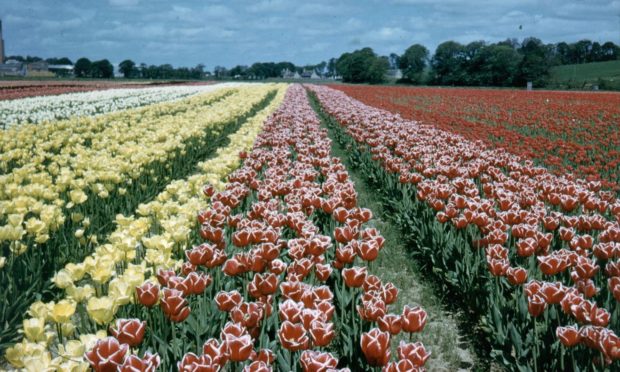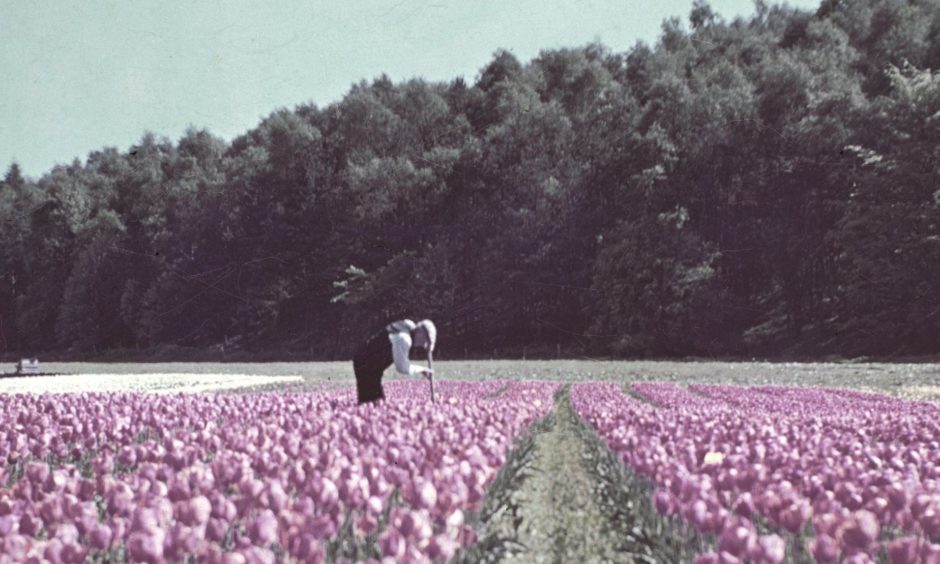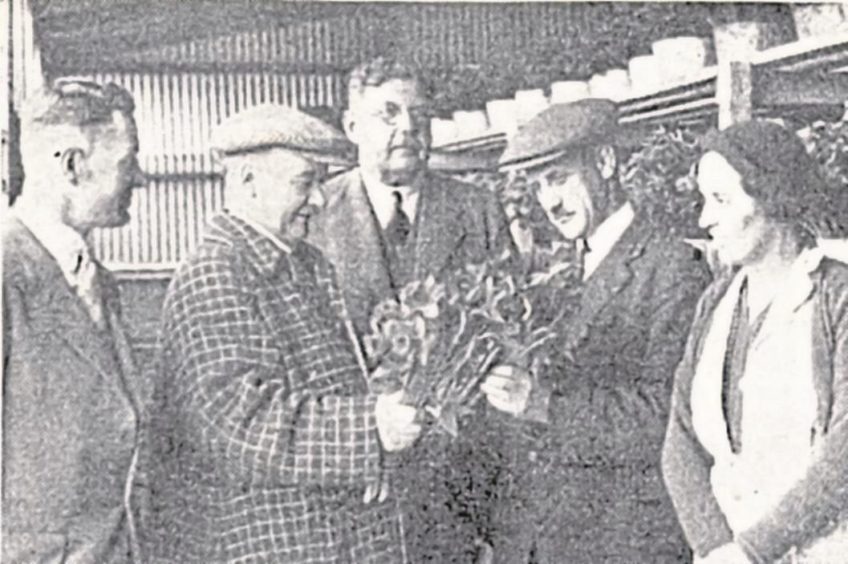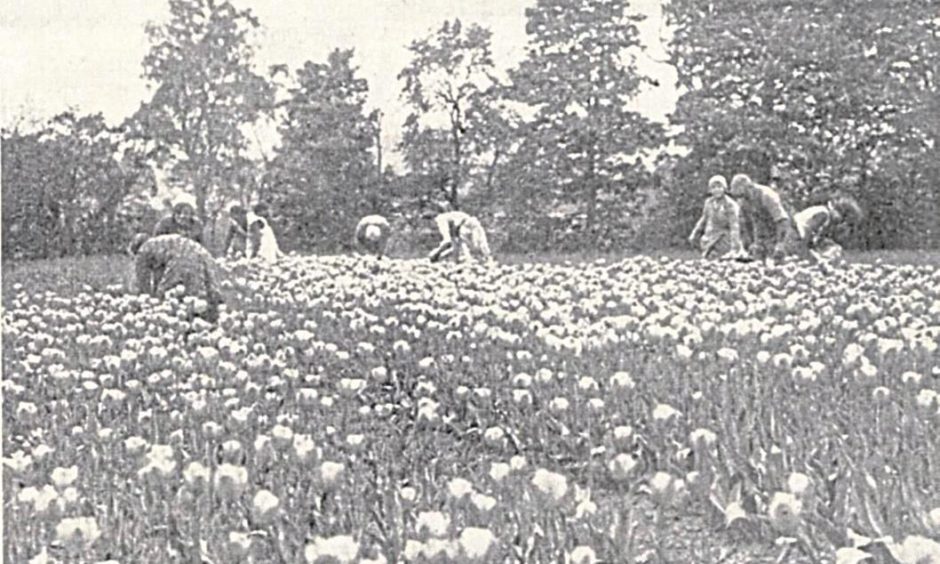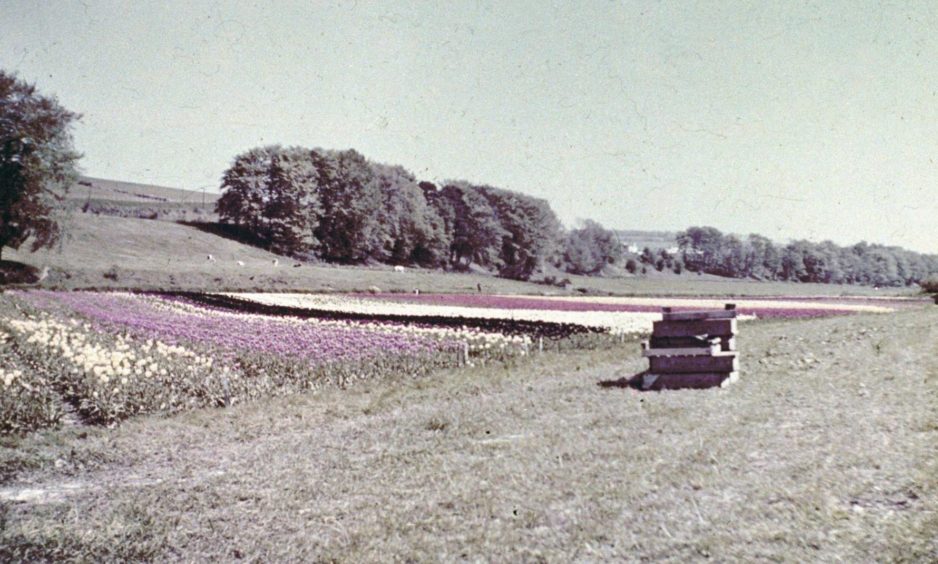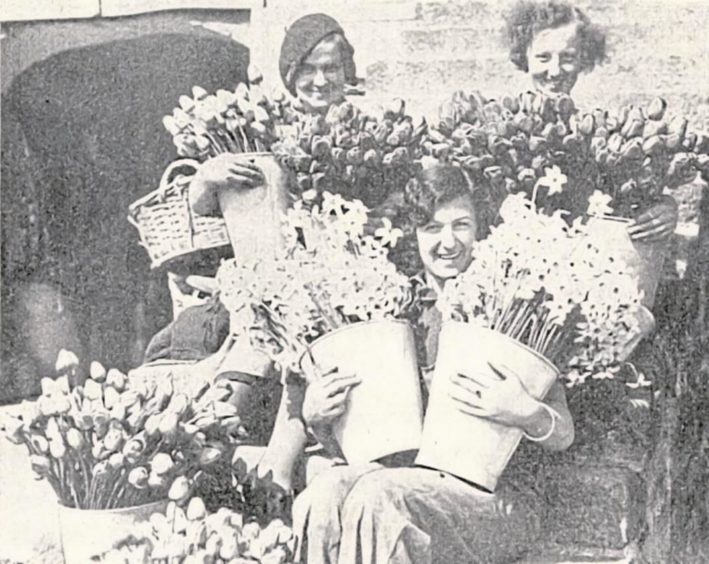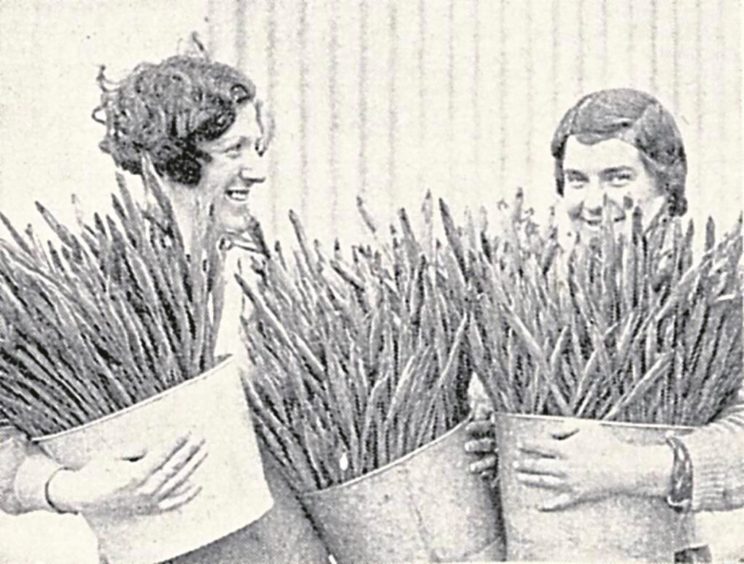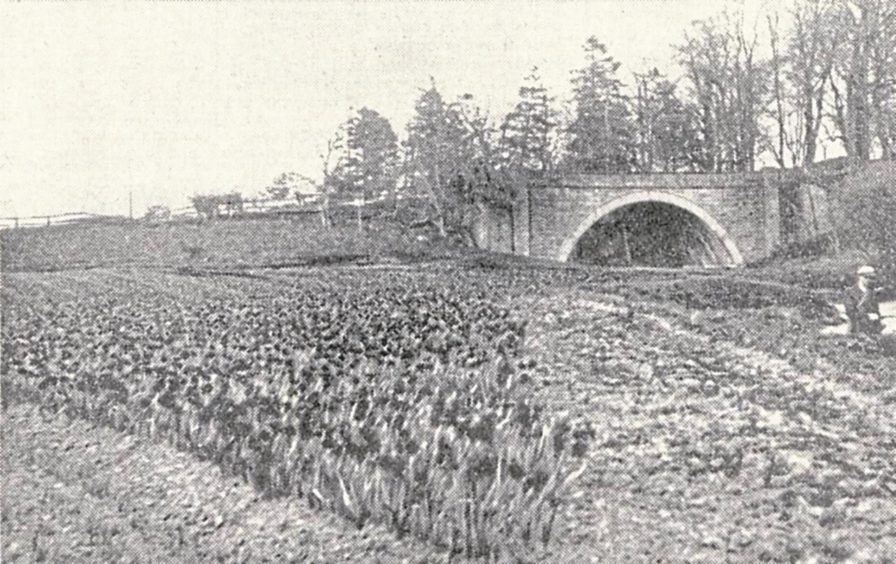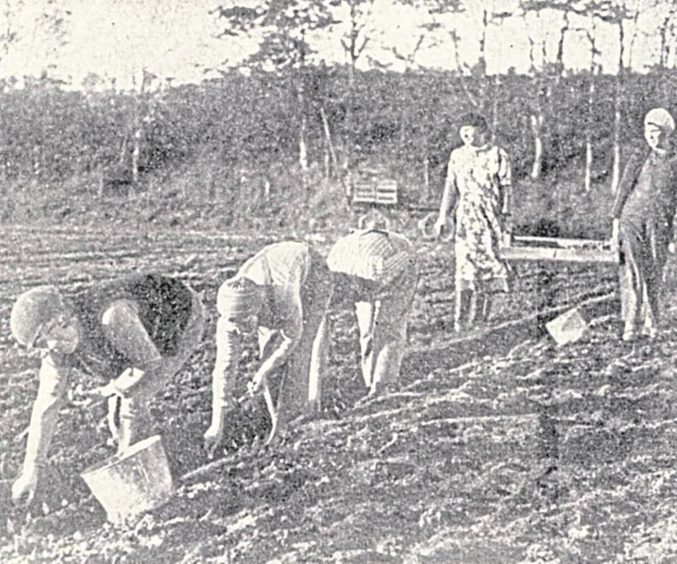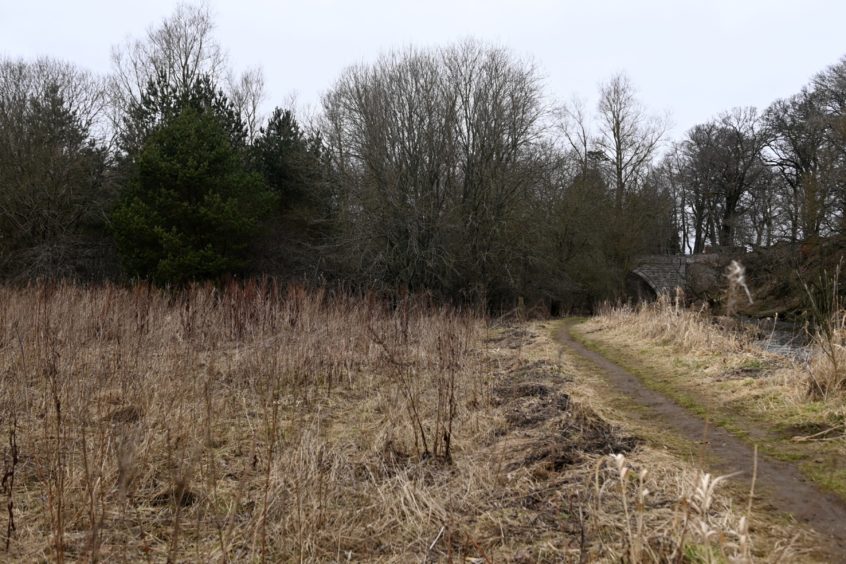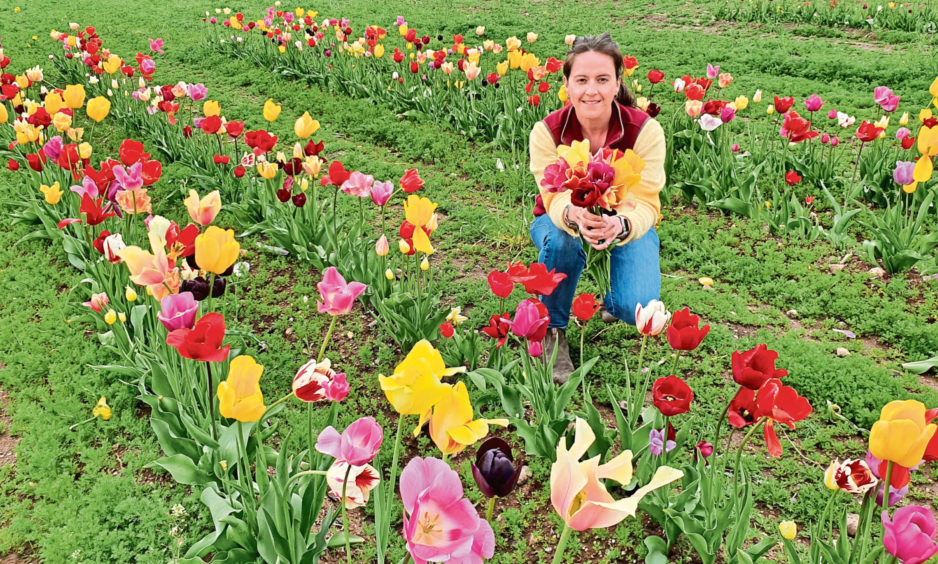For decades, fields along the banks of the River Don in Inverurie were a blaze of golden, dancing daffodils, welcoming visitors to the rural market town.
Inverurie Bulb Farm was part of the biggest flower firm in the world, supplying London’s famous Covent Garden Flower Market with daffodils, tulips and irises.
Every springtime a riot of colour would meander with the river through the gentle Garioch countryside.
And in its heyday the farm would produce 840,000 bunches of daffodils a season for sending to London alone.
Roots in depression
It was while on a cycling trip to the north-east of Scotland that Londoner Richard Seymour Cobley first set eyes on the pastoral lands around Inverurie.
Mr Cobley was a keen grower whose firm owned flower fields across Britain, producing bulbs and blooms that went on to win medals at the Royal Horticultural Society.
He thought the rich river soil would be ideal for cultivating bulbs and by the 1910s, a small, but thriving industry of 20 employees had taken root in the Don valley.
When the Great Depression hit in the late 1920s, unemployment was on the rise and industry was in decline.
Agriculture was not immune from the economic slump and with poor financial return on oats and barley, farmers were turning prime arable land over to grass.
But Messrs Seymour Cobley Ltd spotted opportunity in the misery.
Rather than losing these fields to grazing, they put them to a more profitable use by expanding their bulb-planting enterprise.
Little Holland
With headquarters in Port Elphinstone, Inverurie, and almost 200 acres of bulb fields that extended downstream towards Hatton of Fintray, business blossomed during the 1930s.
Such was the success of the plantations, that the area around the River Don was nicknamed ‘Little Holland’.
It employed 200 staff to carefully hand-pick and delicately hand-pack bunches in boxes for rushing to London by rail.
At its height, the farm even sent bulbs to the Netherlands, a nation famed for its own iconic fields of Tulips.
King of cut flowers
To satisfy demand, a new Dutch barn was unveiled at Inverurie Bulb Farm in 1939 to improve and speed up the production process.
In days gone by, daffodils would be transported from the fields in open baskets, but the barn allowed them to be stored in water or brought on by heat if the mercury dropped outside.
Women and girls would bunch the flowers before placing them on a conveyer belt to the packers.
A daily phone call to Covent Garden Market would determine how many bulbs and flowers would be sent that day.
The Inverurie output was the northernmost branch of a well-oiled machine that ensured Seymour Cobley Ltd was king when it came to the cut flower market in springtime.
The firm’s first crop of the year would be ready on January 1 having been grown under glass over winter at Spalding Bulb Farm in Lincolnshire.
While the warmer climes of Braunton Bulb Farm ensured a steady supply of mid-season flowers for the London market.
By March, daffodil season was in full swing at Inverurie – 1,000 boxes a day, bursting with blooms would be sent all over Britain, while bulbs would be exported to America.
Flower season would continue into June, before bulbing took over from July to September.
The farm ticked over during the Second World War despite a ban on transporting flowers by rail, and in the 1940s, 40 full-time members of staff were employed in the Garioch.
Cutting losses
But by the 1970s, the fields’ fortunes wilted.
A report said ‘unusually mild’ springs in north-east Scotland, economic challenges and the success of artificial flowers was affecting business.
Donald McIlvride, manager at Inverurie, said at the time: “Everything connected with costs has risen three-fold, but on the wholesale market, the price of flowers is less than it was in the 1930s.
“And the introduction of plastic flowers hasn’t helped.
“We used to grow 15 acres of double white daffodils, 9d to 1 shilling a bunch (53p-70p).
“But over the last three years we haven’t been able to give them away.”
It was estimated the farm was losing several thousands pounds a year.
A rise in spring temperatures caused earlier flowering in the north-east.
Produce was arriving at market at the same time as those from bulb firms in England.
No longer competitive or profitable, Inverurie Bulb Farm closed in October 1971, just a few years after the Braunton and Spalding fields were sold.
Twelve full-time and 60 seasonal jobs were lost, including that of employee Alan McDonald, who aged 63 had spent his whole working life on the farm.
Bright future
The glowing fields may have disappeared from the Garioch, but the future of British daffodil farming is bright.
Ninety-percent of the world’s cut daffodils are produced in the UK, with the majority of those in Cornwall.
Yet at the same time, despite having ideal growing climates, the UK imports 90% of the flowers found on its supermarket shelves.
In south Aberdeenshire, arable farmers NJ McWilliam & Co have a 500-hectare farm where they grow cereals, potatoes and flowers.
The fourth-generation producers supply a commercial crop of daffodils in springtime, and export bulbs to America and Europe in summer.
The firm’s Kym McWilliam says there is plenty of scope for a booming flower-growing industry in Scotland.
In fact, the Laurencekirk firm is expanding ‘The Flower Field’ – its successful pick-your-own offering in the Mearns.
Kym said: “It is pertinent now with the increased awareness of the origin of produce that we can promote locally-grown flowers for their freshness and vigour.
“‘Grown not flown’ is well-used amongst the food sector here in Scotland and it is just as appropriate for flowers.
“As well as our commercial crop of daffodils that we will start picking soon, we have one pick-your-own field that will expand to two shortly.
“These fields offer spring and summer flowers – tulips, allium, iris, sunflowers, gladioli and dahlia. One is just south of Laurencekirk and the second will be close to the Brechin Castle Garden Centre.”
Kym is also part of a national Rural Innovation Support Service (RISS) group formed with eight other growers to promote flowers grown in Scotland.
